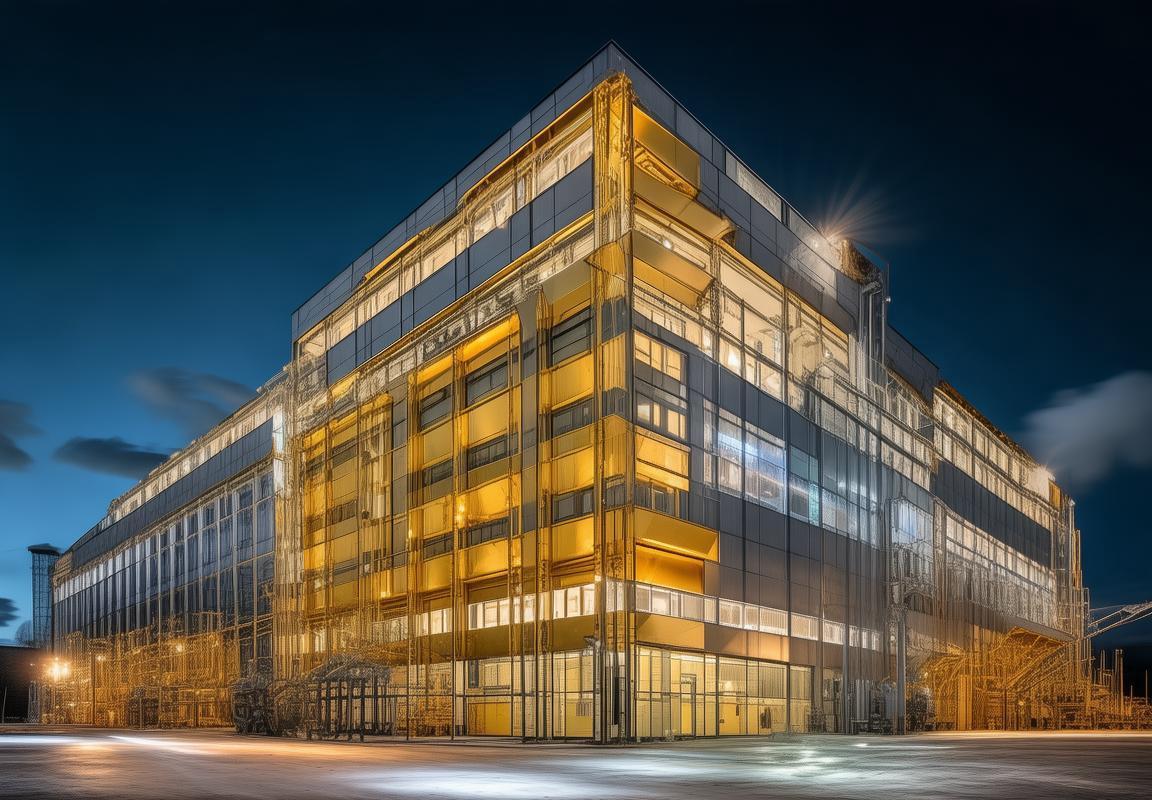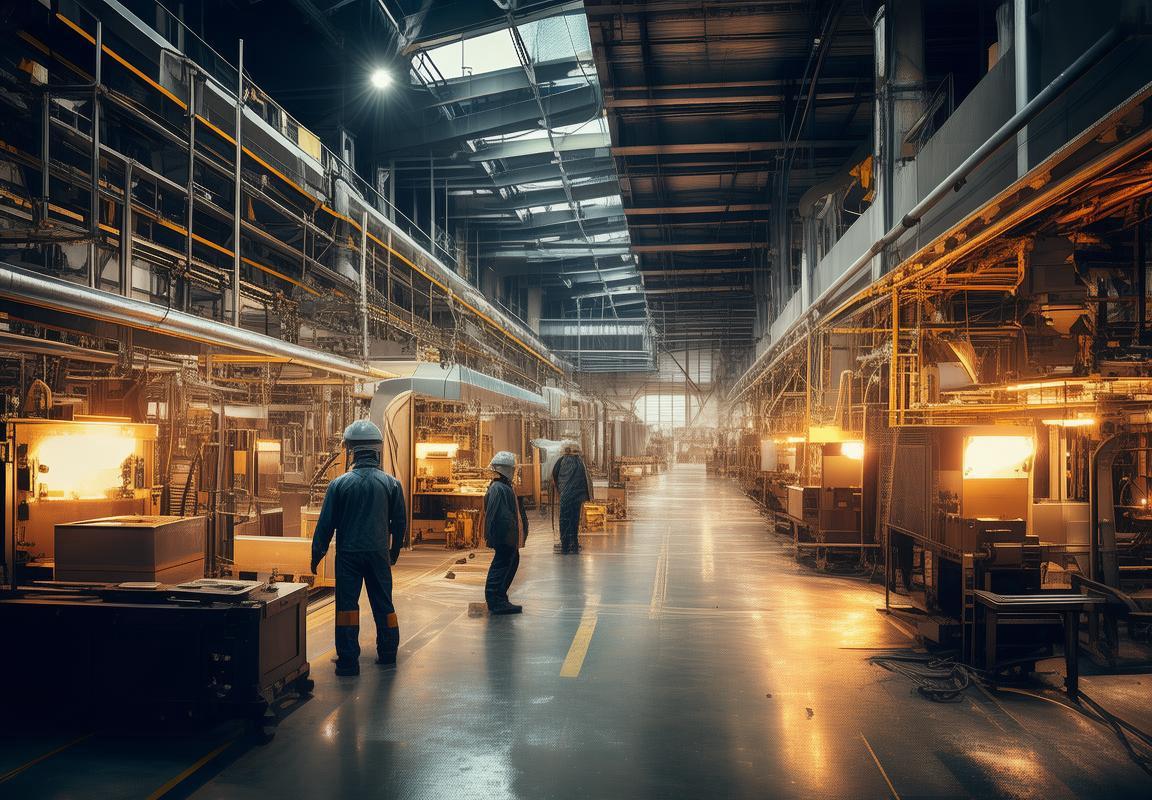In a world where technology must stand up to the toughest of environments, the quest for innovation in cold-resistant models is paramount. Today, we delve into the cutting-edge work of CIP Moscow, a commercial factory that’s not just surviving but thriving in the face of extreme cold. From the intricate engineering processes to the real-world success stories that showcase the durability of their -25°C models, this factory is at the forefront of pushing the boundaries of cold-resistant technology.
Braving the Extreme: Introducing the -25°C Cold Resistant Model
In a world where temperatures plummet and harsh climates challenge the resilience of everyday products, there’s a beacon of innovation that stands tall—introducing the -25°C Cold Resistant Model. This marvel of engineering isn’t just a piece of equipment; it’s a testament to human ingenuity and the relentless pursuit of perfection in the face of extreme conditions.
Crafted to withstand the coldest of colds, this model is designed for those environments where the mercury dips dangerously low. Whether it’s in the heart of Siberia, the frosty peaks of the Andes, or the icy expanse of the Arctic, this model is a reliable companion that doesn’t buckle under the pressure of freezing temperatures.
The outer shell of the -25°C Cold Resistant Model is engineered with state-of-the-art materials that not only keep the elements at bay but also ensure the integrity of the product’s functionality. The use of high-grade plastics and metals that are known for their thermal resistance means that this model can operate efficiently in environments where other products would simply fail.
But it’s not just about the materials; it’s about the design. The aerodynamic shape and the strategically placed insulation panels work in harmony to minimize heat loss and maintain optimal performance. Every curve and crevice has been meticulously thought out to ensure that the model remains robust and reliable, no matter how fierce the cold becomes.
The heart of this model is its advanced heating system. Equipped with a cutting-edge thermal management system, it can maintain operational temperatures even in the most frigid settings. The system is not only efficient but also energy-saving, making it a practical choice for those who need a reliable product without the guilt of excessive energy consumption.
One of the standout features of the -25°C Cold Resistant Model is its user-friendly interface. Despite its robustness, it’s designed to be intuitive, allowing even those who are not technically inclined to operate it with ease. The clear displays and straightforward controls ensure that the user can focus on their task without being bogged down by complexity.
Durability is another cornerstone of this model. The hinges are reinforced, the seals are airtight, and the internal components are protected against corrosion. This means that the -25°C Cold Resistant Model is not just built to last; it’s built to outlast the rigors of the cold.
But what truly sets this model apart is its adaptability. It’s not just a one-trick pony; it’s a versatile solution that can be tailored to meet the specific needs of various industries. From construction and mining to outdoor research and emergency response, the -25°C Cold Resistant Model can be customized to handle a wide range of tasks in extreme conditions.
Safety is paramount, and the -25°C Cold Resistant Model doesn’t skimp on this aspect. It comes with a suite of safety features that include automatic shutdowns in case of overheating, anti-freeze systems to prevent liquid damage, and sturdy construction to protect against falls or impacts. These features ensure that the user can work with peace of mind, knowing that their equipment is reliable and secure.
The story of the -25°C Cold Resistant Model is one of collaboration and dedication. It’s the result of years of research and development, countless iterations, and a team of engineers who refuse to compromise on quality. The model has been tested in some of the harshest conditions on Earth, and it has proven time and time again that it can withstand the elements.
In a world that is becoming increasingly aware of the importance of sustainability, the -25°C Cold Resistant Model also boasts eco-friendly features. The materials used are recyclable, and the energy-efficient design reduces the carbon footprint, making it an environmentally responsible choice for businesses and individuals alike.
As the temperatures drop and the world braces for the cold, the -25°C Cold Resistant Model stands ready to serve. It’s not just a product; it’s a promise—a promise to keep going, to keep working, and to keep innovating in the face of extreme conditions. This model is more than just cold-resistant; it’s a symbol of human perseverance and the relentless quest to push the boundaries of what’s possible.

The Heart of Innovation: CIP Moscow’s Commercial Factory
Nestled in the bustling heart of Moscow, CIP Moscow’s commercial factory stands as a testament to innovation and precision. This state-of-the-art facility is not just a place of production; it’s a hub of cutting-edge technology and a beacon of excellence in the manufacturing sector.
The factory’s architecture is both functional and inspiring, with towering walls and expansive windows that flood the interior with natural light. Inside, the space is a symphony of activity, where every corner is dedicated to the meticulous crafting of products that will stand the test of time.
At the core of the factory, you’ll find a team of skilled engineers and technicians, each a master of their craft. They work in an environment that is as clean as it is high-tech, with rows of workstations equipped with the latest tools and machinery. The atmosphere is one of focused intensity, where each employee is deeply invested in the quality of their work.
The factory’s layout is designed for efficiency, with a clear flow from raw materials reception to finished product dispatch. The raw materials are meticulously inspected upon arrival, ensuring that only the highest quality components are used in the manufacturing process. This commitment to quality is evident at every stage of production.
In the heart of the factory, the assembly lines hum with activity. Workers move with practiced precision, attaching components and fine-tuning machines. The -25°C cold resistant model, in particular, requires a meticulous approach. Each part is engineered to withstand extreme temperatures, and the assembly process is carefully monitored to ensure that every component fits seamlessly into the larger design.
The factory’s innovation doesn’t stop at the assembly lines. Research and development (R&D) teams are constantly at work, pushing the boundaries of what’s possible. They collaborate with experts from various fields, including materials science and mechanical engineering, to create new solutions that can be integrated into the manufacturing process.
One of the standout features of the R&D wing is the advanced testing facilities. These facilities allow engineers to subject prototypes to rigorous environmental conditions, ensuring that the -25°C cold resistant model can handle the harshest of scenarios. The results are meticulously documented, and any lessons learned are quickly applied to the next iteration of the product.
Safety is paramount at CIP Moscow’s commercial factory. The facility is equipped with the latest safety systems, including fire suppression and emergency evacuation protocols. Employees are regularly trained on safety procedures, and the factory’s management is committed to creating a secure working environment.
As the day progresses, the factory buzzes with a sense of purpose. Each worker is an integral part of the larger machine, contributing to the creation of products that are not just built to last but also designed to excel in challenging conditions. The -25°C cold resistant model, in particular, is a point of pride for the entire team.
The factory’s commitment to sustainability is also noteworthy. Efforts are made to minimize waste and reduce the environmental impact of operations. Energy-efficient lighting and machinery are used throughout the facility, and recycling programs are in place to manage materials effectively.
In the evenings, as the city of Moscow begins to wind down, the factory remains active. Workers put the final touches on the day’s production, ensuring that every product that leaves the factory is up to the highest standards. It’s a testament to the dedication and passion that drives the team at CIP Moscow.
As the sun sets over the city, casting a golden glow over the factory’s windows, it’s clear that this is more than just a place of work. It’s a place where innovation meets expertise, and where the future of manufacturing is being shaped one product at a time. CIP Moscow’s commercial factory is indeed the heart of innovation, a beacon of excellence in the world of industrial manufacturing.

The Cold Facts: Why -25°C Resistance Matters
In a world where technology often meets the demands of the great outdoors, the ability to withstand extreme temperatures is not just a feature; it’s a necessity. The -25°C cold resistant model is not just another product; it’s a testament to the resilience and ingenuity of modern engineering. Let’s delve into why this -25°C resistance matters so profoundly.
The Relevance of Low-Temperature PerformanceEnduring frigid conditions is no small feat. From the coldest Arctic regions to mountainous altitudes, the need for equipment that can operate in sub-zero temperatures is paramount. The -25°C cold resistant model is designed to function seamlessly in these environments, ensuring reliability when the mercury drops.
Environmental ConsiderationsCold resistance isn’t just about keeping devices from freezing. It’s also about preserving the integrity of the environment. In regions where temperatures plummet, equipment failure can lead to environmental hazards, such as oil leaks from machinery. The -25°C model is designed to prevent such incidents, safeguarding ecosystems that are already under stress.
Economic ImplicationsThe economic impact of cold resistance is significant. In industries like construction, agriculture, and mining, operations often come to a halt when temperatures plummet. The -25°C model ensures that these sectors can continue working, minimizing downtime and maintaining economic stability.
Safety and ReliabilityIn many cases, the -25°C model is used in critical applications where safety is non-negotiable. Whether it’s medical equipment, communication systems, or transportation tools, the ability to operate at extreme levels can be a literal lifesaver. Reliability in these scenarios is not just a benefit; it’s a fundamental requirement.
Longevity of the ProductWhen a product is designed to withstand -25°C, it’s typically built to last. The rigorous testing and materials used in creating the -25°C cold resistant model ensure that it maintains its performance over time, reducing the need for frequent replacements and contributing to a more sustainable approach to product lifecycle management.
Global Market AppealThe demand for cold-resistant products is not confined to specific regions. As global climate patterns shift, more areas are experiencing extreme cold spells. This expansion in the market for cold-resistant equipment means that the -25°C model can appeal to a broader audience, making it a versatile and valuable addition to any company’s product line.
Technological AdvancementsThe development of the -25°C cold resistant model is a nod to technological advancements. It reflects the capabilities of modern materials science, thermodynamics, and electronics. These advancements are not just confined to the -25°C model; they contribute to the broader technological landscape, influencing other industries and innovations.
Compliance with International StandardsThe -25°C cold resistant model adheres to stringent international standards, which are crucial for ensuring safety and quality across borders. This compliance is essential for businesses that operate on a global scale, as it allows them to meet the regulatory requirements of various markets without compromise.
Innovation in MaterialsCreating a product that can operate at -25°C requires innovative materials that can maintain their structural integrity and performance in extreme cold. This focus on materials science leads to advancements not only in the -25°C model but also in other products, making materials more resilient and versatile.
Consumer Trust and Brand ReputationFor consumers, the ability to trust a product to perform in the coldest conditions is invaluable. The -25°C cold resistant model reinforces a brand’s reputation for reliability and innovation, fostering customer loyalty and trust. This is especially important in industries where brand reputation is paramount.
In conclusion, the -25°C cold resistant model’s ability to operate in extreme cold is not just a feature; it’s a symbol of modern engineering’s capability to meet the most challenging demands. It ensures safety, reliability, and efficiency in a wide range of applications, and its impact extends beyond the product itself, influencing technological advancements and consumer trust.

Inside the Factory: A Glimpse at CIP Moscow’s Operations
Nestled in the bustling heart of Moscow, CIP’s commercial factory stands as a testament to modern engineering and industrial prowess. The facility is a marvel of efficiency and precision, where every step in the production process is meticulously designed to ensure the highest quality of products. Here’s a glimpse into the daily operations that keep this factory humming.
The moment you step inside, you’re greeted by a symphony of activity. Workers, equipped with safety gear and focused expressions, move with purpose. The factory is divided into distinct zones, each dedicated to a specific stage of the production process. The first area is where raw materials are meticulously sorted and inspected.
Metallic clangs echo through the air as workers handle sheets of high-grade steel. These materials are not just any steel; they are specially formulated to withstand extreme temperatures, ensuring that the products leaving this factory are not just durable but also resilient. The precision of the sorting process is crucial, as even the smallest imperfection can compromise the integrity of the final product.
As the materials make their way through the factory, they are subjected to a series of treatments that enhance their cold resistance. Workers apply protective coatings and heat the components to specific temperatures, allowing for the formation of a durable surface that can endure the harshest conditions. The attention to detail is evident in the careful monitoring of these processes, with automated systems constantly adjusting parameters to achieve optimal results.
The next area of the factory is where the actual assembly takes place. Here, machines and robots work in tandem with skilled technicians to piece together the various components. The assembly line is a sight to behold, with each part being carefully fitted into its designated slot. The synchronization of the machines is a dance of precision, with each motion calculated to ensure a seamless integration of parts.
The factory’s cleanliness is impeccable. Every surface is polished, every tool is sanitized, and every worker adheres to strict hygiene protocols. This level of cleanliness is not just for appearance; it’s a necessity in maintaining the quality of the products. Dust and debris can lead to contamination, so the factory operates like a surgical theater, where every procedure is performed with the utmost care.
Once assembled, the products are subjected to rigorous testing. These tests are designed to push the products to their limits, ensuring that they can indeed withstand the -25°C temperatures they are designed for. Workers operate sophisticated testing equipment, monitoring the performance of the products under simulated cold conditions. The results are meticulously recorded, and any deviations from the expected performance trigger a thorough investigation.
In the quality control department, a team of inspectors meticulously examines each product. They look for any signs of defect or malfunction, using high-resolution cameras and magnifying tools to catch the smallest of imperfections. The products that pass this stage are then packaged, ready to be shipped to customers around the world.
The packaging area is a hive of activity. Workers carefully wrap the products in protective materials, ensuring that they are safeguarded during transit. The packaging process is not just about securing the items; it’s also about presenting them in a way that reflects the brand’s commitment to excellence. Each box is labeled with detailed information, and the products are placed in crates that can withstand the rigors of transportation.
As the day winds down, the factory’s operations slow but never stop. Maintenance teams are already at work, ensuring that all machinery is in top condition for the next shift. They lubricate moving parts, check for wear and tear, and make any necessary repairs. This proactive approach to maintenance is what keeps the factory running smoothly and efficiently.
The factory’s atmosphere is one of teamwork and collaboration. Employees from different departments communicate seamlessly, sharing knowledge and expertise to improve processes and products. This collaborative spirit is evident in the constant innovation that takes place within the walls of CIP Moscow’s commercial factory.
As the sun sets over Moscow, casting a golden hue over the city, the factory remains a beacon of industry and innovation. Inside, the work continues, driven by a shared vision of excellence and a commitment to delivering products that can withstand the cold, the elements, and the test of time.

Designing for the Elements: The Engineering Behind the -25°C Model
The engineering behind the -25°C cold resistant model is a testament to the relentless pursuit of excellence in manufacturing. It’s a blend of advanced materials, meticulous design, and rigorous testing that ensures reliability and performance in the harshest of conditions. Let’s delve into the intricacies of this engineering marvel.
Materials that Defy ColdThe foundation of the -25°C model lies in the selection of materials that can withstand extreme. Specialized alloys and high-performance plastics are chosen for their exceptional thermal conductivity and tensile strength. These materials are not just chosen for their inherent properties but are also designed to be lightweight, reducing the overall thermal load in sub-zero environments.
Innovative Insulation TechniquesInsulation is key to maintaining the operational integrity of the -25°C model. Engineers at CIP Moscow have developed innovative insulation techniques that trap heat within the system, preventing it from escaping into the cold surroundings. This includes the use of multi-layered, reflective insulation materials that bounce heat back into the device, ensuring that the internal temperature remains stable even when the external temperature plummets.
Precision in DesignThe design of the -25°C model is a delicate balance between functionality and durability. Every component is carefully positioned to optimize heat distribution and minimize the risk of cold-related failures. The design team has incorporated advanced computational fluid dynamics (CFD) simulations to predict and mitigate potential thermal issues, ensuring that the model operates seamlessly in temperatures as low as -25°C.
Heat Management SystemsHeat management is critical in maintaining the operational life of the -25°C model. The engineering team has developed sophisticated heat sinks and fans that dissipate heat efficiently, preventing overheating. These systems are designed to operate at optimal efficiency without compromising the device’s performance. The use of thermal paste and direct liquid cooling solutions ensures that heat is transferred quickly and effectively away from sensitive components.
Sealants and AdhesivesTo prevent moisture and frost from affecting the internal components, the -25°C model is sealed with high-quality, specialized sealants and adhesives. These materials are engineered to maintain their integrity at extreme temperatures, offering a barrier against the ingress of water and ice. The attention to detail in these seals is crucial for the longevity and reliability of the device in cold climates.
Thermal Expansion ConsiderationsMaterials expand and contract with temperature changes, and this must be accounted for in the design of the -25°C model. Engineers have taken into account the thermal expansion properties of the materials used, ensuring that components can move and flex without causing stress or failure. This includes the use of flexible connectors and joints that can adapt to temperature fluctuations without compromising the device’s performance.
Rigorous Testing ProtocolsBefore the -25°C model can be deemed ready for market, it undergoes rigorous testing protocols. These tests are designed to simulate the coldest conditions the model will face, ensuring that it can operate reliably. From cold soak tests to thermal shock tests, each component is put through its paces to validate its performance and durability.
Collaboration with ExpertsThe development of the -25°C model involved collaboration with a team of experts from various fields. Materials scientists, thermal engineers, and mechanical designers worked together to push the boundaries of what’s possible in cold-resistant technology. This multidisciplinary approach has led to a device that is not only cold-resistant but also adaptable to a wide range of applications.
Continuous ImprovementThe journey to creating the -25°C model is an ongoing process of continuous improvement. Engineers are constantly seeking new materials, technologies, and methods to enhance the device’s performance. This commitment to innovation ensures that the -25°C model remains at the forefront of cold-resistant technology, ready to meet the demands of challenging environments.
In conclusion, the engineering behind the -25°C cold resistant model is a symphony of materials science, design ingenuity, and relentless testing. It’s a product of years of dedication to creating a device that can perform in the most demanding conditions, showcasing the power of innovation in the face of adversity.

Quality Assurance: How CIP Moscow Ensures Reliability
In the heart of CIP Moscow’s commercial factory, quality assurance is not just a procedure; it’s a commitment to excellence that drives every aspect of their operations. From the moment materials arrive at the facility to the final product being shipped out, a meticulous process ensures that each -25°C cold resistant model meets the highest standards.
Materials are meticulously inspected upon arrival, ensuring that they are of the highest quality and free from any defects. This initial screening is crucial, as the raw materials are the foundation of the products’ durability and performance. The team at CIP Moscow understands that even the smallest imperfection can compromise the integrity of the -25°C model, so they take every measure to prevent such issues.
The manufacturing process itself is a symphony of precision and care. The engineers at CIP Moscow have developed a series of protocols to guarantee that each component is manufactured to exact specifications. Advanced machinery and cutting-edge technology are used to craft parts with extreme accuracy, ensuring that the final assembly is seamless and robust.
Once the components are manufactured, they undergo a rigorous testing phase. This is where the true essence of quality assurance comes into play. Engineers subject the parts to a variety of stress tests, including temperature extremes, pressure, and mechanical force. These tests are designed to mimic real-world conditions, ensuring that the -25°C model can withstand the harshest environments.
During the assembly phase, the focus shifts to the integration of these components. Each assembly line is led by experienced technicians who pay close attention to detail. The slightest misalignment or loose connection can lead to failure in extreme conditions, so every step is performed with the utmost care.
After assembly, the -25°C models are put through a comprehensive series of functional tests. These tests evaluate the performance of the product under simulated operating conditions. Engineers closely monitor the results, looking for any signs of malfunction or degradation in performance. If a product fails to meet the stringent quality standards, it is immediately flagged for further inspection and, if necessary, disassembly and reassembly.
Quality assurance doesn’t end with testing. CIP Moscow maintains a continuous improvement program that encourages employees to identify areas for enhancement. This culture of innovation ensures that the manufacturing process evolves over time, adapting to new challenges and technologies.
The company also invests heavily in training its staff. Employees are educated on the latest quality control methods and are empowered to take ownership of their work. This approach not only boosts productivity but also fosters a sense of pride and responsibility among the workforce.
Furthermore, CIP Moscow maintains a robust supply chain that is audited regularly. This ensures that all materials and components sourced from external suppliers meet the same high standards as those produced in-house. The company’s supply chain partners are chosen for their commitment to quality and their ability to deliver consistent performance.
One of the cornerstones of CIP Moscow’s quality assurance is the use of advanced monitoring systems. These systems track the performance of the -25°C models in the field, providing real-time data that can be used to identify and resolve issues quickly. This proactive approach to maintenance and service helps to extend the life of the products and ensures that customers receive the highest level of support.
Finally, customer feedback is invaluable to CIP Moscow. The company actively seeks out and analyzes customer reviews and suggestions, using this information to refine its products and processes. This customer-centric approach ensures that the -25°C models continue to meet and exceed expectations.
In summary, the quality assurance process at CIP Moscow is a comprehensive and ongoing endeavor. It involves every stage of the product lifecycle, from material selection to final delivery, and it is underpinned by a culture of excellence and continuous improvement. The result is a -25°C cold resistant model that not only meets but exceeds the demands of the most challenging conditions, providing customers with the reliability and performance they require.

Customer Success Stories: Real-World Applications of the -25°C Model
In the heart of the Arctic, where temperatures plummet to -25°C and the elements are unforgiving, the -25°C cold resistant model stands as a testament to human ingenuity and engineering prowess. This marvel is not just a product; it’s a solution, a lifeline for those who operate in the harshest of environments. Let’s delve into the real-world applications that showcase the resilience and versatility of this remarkable model.
From the frozen tundra of Siberia to the bustling streets of Moscow, the -25°C model is a workhorse in various industries. Consider the mining sector, where extraction in such extreme conditions is not only challenging but also dangerous. The model’s ability to function reliably at such low temperatures ensures that equipment operates smoothly, minimizing downtime and keeping workers safe.
In the transportation industry, the -25°C model is a silent guardian on the roads. It powers vehicles that traverse the frozen landscapes, ensuring that supplies reach remote communities and that emergency services can respond swiftly. The model’s durability and efficiency are crucial in maintaining the flow of goods and services during the coldest months.
The agricultural sector also benefits from the -25°C model. In regions where winter extends for months, farmers rely on this technology to keep their crops safe and their operations running. Greenhouses, storage facilities, and irrigation systems all benefit from the model’s ability to maintain critical temperatures, preserving produce and ensuring a food supply year-round.
In the energy sector, the -25°C model plays a pivotal role in maintaining the integrity of power grids and oil pipelines. These infrastructures are susceptible to damage in extreme cold, but the model’s cold-resistant components prevent leaks, breakdowns, and power outages. This reliability is essential for keeping homes warm and businesses operational during the depths of winter.
The model’s versatility is further highlighted in the construction industry. In the frozen north, buildings and infrastructure must withstand the rigors of the climate. The -25°C model is used in construction machinery, ensuring that cranes, bulldozers, and excavators can operate without failure, despite the biting cold.
Healthcare is another sector where the -25°C model makes a significant impact. In polar research stations and remote medical facilities, the model keeps critical equipment running, from medical imaging devices to life-support systems. This means that even in the most isolated areas, patients can receive the care they need.
The model’s reach extends beyond Russia’s borders. International collaborations and export deals have seen the -25°C model deployed in various countries facing similar climatic challenges. From the icy roads of Canada to the frigid steppes of Mongolia, the model’s reputation for reliability precedes it.
One of the most inspiring stories comes from a team of polar explorers who used the -25°C model in their latest expedition. Their goal was to reach the North Pole, and the model was their trusty companion. The explorer’s tales of the model’s unwavering performance, even when subjected to sub-zero temperatures and harsh winds, are a testament to its design and engineering.
Another success story involves a group of researchers studying the effects of climate change on polar bears. Their equipment, powered by the -25°C model, allowed them to collect invaluable data in one of the most extreme environments on Earth. The model’s reliability was crucial in ensuring that their research could continue uninterrupted.
These real-world applications of the -25°C model are not just about technology; they are about human resilience and the will to overcome adversity. In a world where climate change is altering the face of our planet, the model’s ability to operate in such extreme conditions is a beacon of hope for future generations.
The -25°C model is more than just a piece of equipment; it’s a symbol of human ingenuity and the drive to push the boundaries of what is possible. Its presence in these diverse and challenging environments is a reminder that, with the right tools and determination, we can overcome the toughest of obstacles.

Looking Ahead: The Future of Cold-Resistant Technology with CIP Moscow
In the ever-evolving landscape of technological advancements, cold-resistant technology stands as a testament to human ingenuity and the relentless pursuit of innovation. CIP Moscow, a leader in this field, is at the forefront of pushing the boundaries of what’s possible. The future of cold-resistant technology with CIP Moscow is a tapestry woven with a blend of cutting-edge research, strategic partnerships, and a vision for sustainability.
The materials science division at CIP Moscow is tirelessly researching and developing new alloys and composites that can withstand extreme environments. These materials are not just about withstanding the cold; they are designed to maintain structural integrity and functionality at temperatures as low as -25°C. The research lab is a hub of activity, with engineers and scientists meticulously testing and refining materials to ensure they meet the stringent requirements of cold-resistant applications.
Innovation isn’t confined to the lab; it extends to the manufacturing floor. CIP Moscow’s factory is a marvel of precision engineering and automated systems. The assembly line is a symphony of robotics and skilled craftsmanship, where components are meticulously assembled to create products that are not just cold-resistant but also energy-efficient. The factory’s design incorporates advanced thermal management techniques to maintain optimal temperatures during the production process, ensuring that every product meets the -25°C standard.
Collaboration with academic institutions and industry leaders is a cornerstone of CIP Moscow’s approach. Partnerships with universities foster the development of new theories and methodologies, while working with industry giants ensures that the technology developed is immediately applicable to real-world scenarios. This collaborative ecosystem allows for a seamless flow of ideas and resources, leading to rapid advancements in cold-resistant technology.
Sustainability is a key driver in CIP Moscow’s vision for the future. Recognizing the impact of climate change and the increasing demand for energy-efficient solutions, the company is investing in green technologies. The factory is powered by renewable energy sources, and the production process is optimized to reduce waste and emissions. CIP Moscow is not just focusing on the present; they are laying the groundwork for a future where cold-resistant technology can coexist with environmental stewardship.
One of the most exciting aspects of the future of cold-resistant technology with CIP Moscow is the potential for cross-industry applications. From aerospace to energy exploration, the ability to operate in extreme cold conditions is invaluable. The company’s -25°C models are already being used in Arctic research stations, where they provide reliable support in some of the harshest environments on Earth. As technology continues to advance, we can expect to see these applications expand into new areas, such as deep-sea exploration and even space missions.
The role of artificial intelligence and data analytics in enhancing cold-resistant technology cannot be overstated. CIP Moscow is at the cutting edge of integrating AI into the design and manufacturing processes. By analyzing vast amounts of data, engineers can predict and prevent potential failures, ensuring that products are not just -25°C resistant but also durable and long-lasting. This data-driven approach is reshaping the way cold-resistant technology is developed and will continue to drive innovation forward.
In the realm of workforce development, CIP Moscow is committed to training the next generation of engineers and scientists. The company offers internships and educational programs that provide hands-on experience with cutting-edge technology. By nurturing talent and fostering a culture of continuous learning, CIP Moscow is investing in the future of cold-resistant technology.
The future is bright for cold-resistant technology, and CIP Moscow is leading the charge. From materials science to sustainability, from collaboration to workforce development, the company is setting the stage for a future where the challenges of extreme cold are met with innovative solutions. As we look ahead, the possibilities are endless, and CIP Moscow is poised to shape the landscape of cold-resistant technology for years to come.